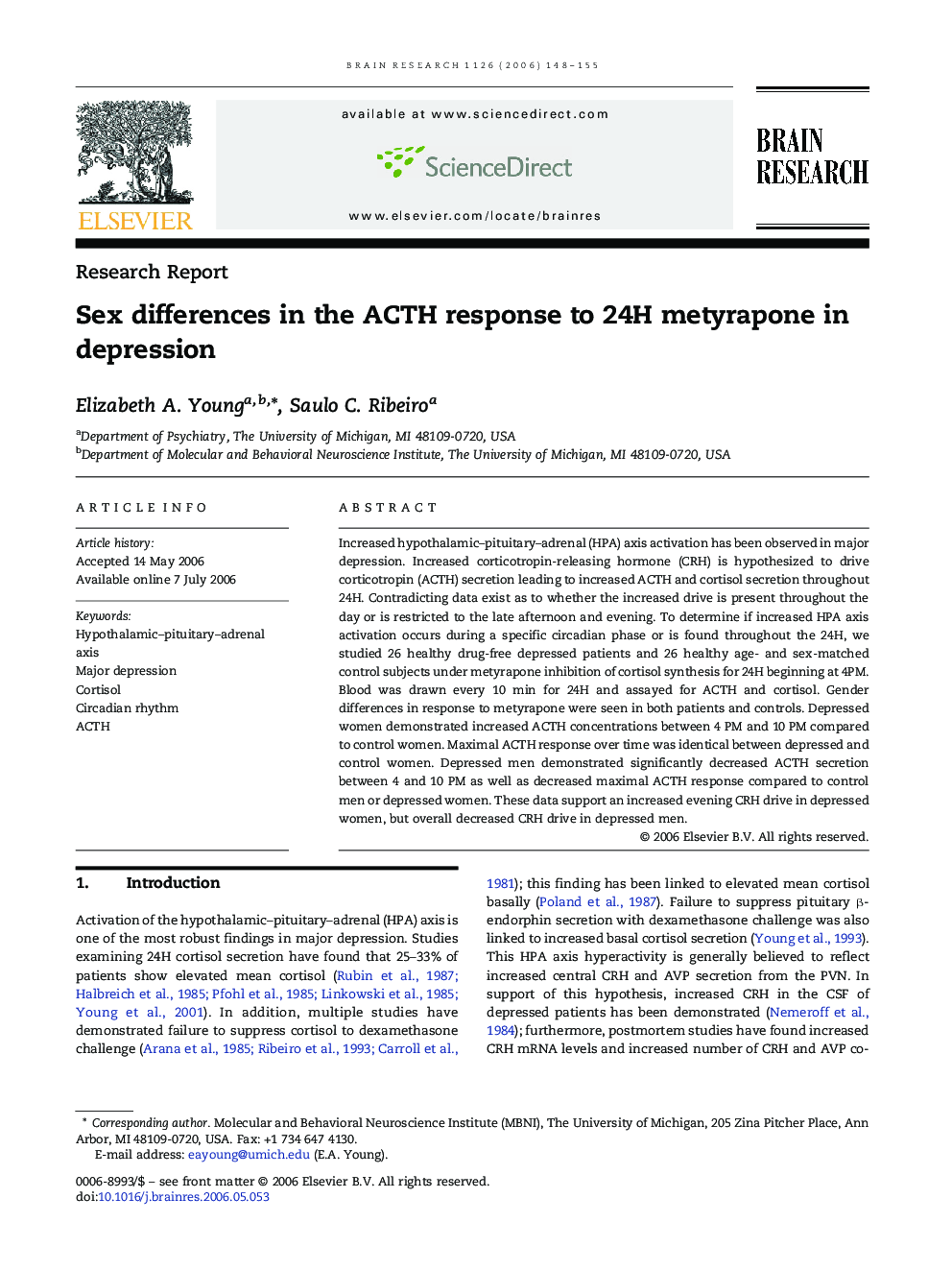| Article ID | Journal | Published Year | Pages | File Type |
|---|---|---|---|---|
| 4331886 | Brain Research | 2006 | 8 Pages |
Increased hypothalamic–pituitary–adrenal (HPA) axis activation has been observed in major depression. Increased corticotropin-releasing hormone (CRH) is hypothesized to drive corticotropin (ACTH) secretion leading to increased ACTH and cortisol secretion throughout 24H. Contradicting data exist as to whether the increased drive is present throughout the day or is restricted to the late afternoon and evening. To determine if increased HPA axis activation occurs during a specific circadian phase or is found throughout the 24H, we studied 26 healthy drug-free depressed patients and 26 healthy age- and sex-matched control subjects under metyrapone inhibition of cortisol synthesis for 24H beginning at 4PM. Blood was drawn every 10 min for 24H and assayed for ACTH and cortisol. Gender differences in response to metyrapone were seen in both patients and controls. Depressed women demonstrated increased ACTH concentrations between 4 PM and 10 PM compared to control women. Maximal ACTH response over time was identical between depressed and control women. Depressed men demonstrated significantly decreased ACTH secretion between 4 and 10 PM as well as decreased maximal ACTH response compared to control men or depressed women. These data support an increased evening CRH drive in depressed women, but overall decreased CRH drive in depressed men.
